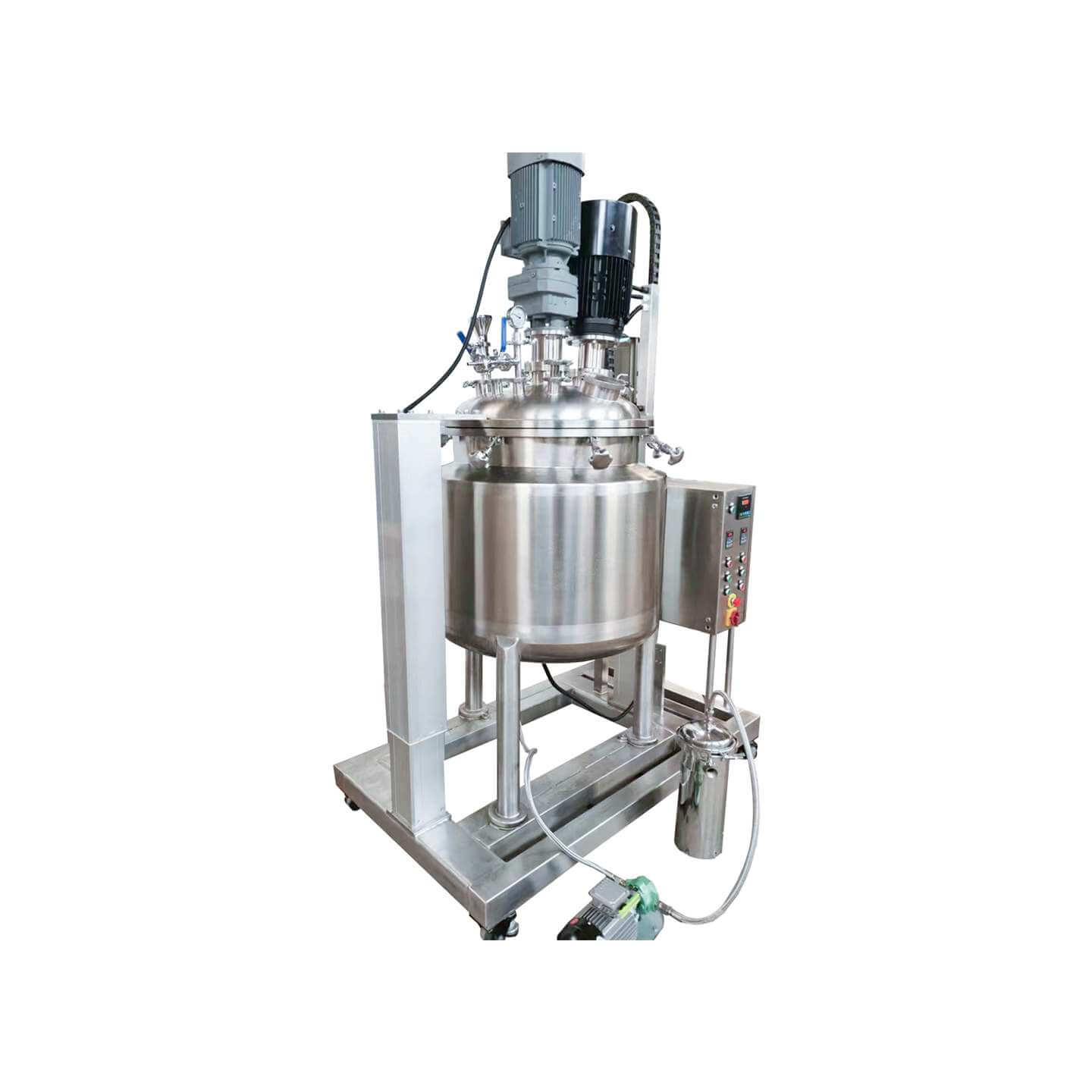

Laboratory Reactor
Laboratory reactor: used in the chemical industry, pesticide, paint, and other fields
Material
glass, stainless steel (316, 304), carbon steel, others
Capacity (L)
10-10000+
Mixing system
anchor, paddle, frame and others
Heating system
electric heating, oil heating and others
The laboratory reactor is small in size, beautiful in appearance, light, and fast in installation. It is composed of a pot body, pot cover, stirrer, jacket, support and transmission device, shaft sealing device, etc. The type of stirring device, rotation speed, sealing structure, heating method, etc. are produced.
Request a quoteDue to design reasons, some laboratory reactors have different heights and lengths, and the lengths of thermometers are also different. Due to the influence of the material medium characteristics and the stirring form, some thermometers that are shorter may not be able to contact the material but will be in gas phase contact. At this time, a temperature difference will also occur. When the volume of the laboratory reactor kettle is larger, the possibility of temperature unevenness of the materials in the kettle increases. There will be large differences in the upper, lower, middle, and cylinder walls of the laboratory reactor kettle body.

Laboratory reactor operation steps
1.Pour about 0.7MPa nitrogen into the laboratory reactor to test the pressure. Observe pressure changes for about 30 minutes to determine if there is a leak. If there is a leak, it needs to be drained out first. Retighten the tightened screws with nitrogen flushed into the laboratory reactor.
2.Set the temperature around 160°C and record the pressure values in the laboratory reactor at different temperatures. During the experiment, it is recommended to record the pressure value every 10°C.
3.Turn on the power of the laboratory reactor, and then start stirring and heating. The stirring speed and heating temperature must be controlled. It is recommended to control the heating rate within 100°C/h and use cooling water to cool the stirring shaft at the same time. Add 250ml of water to the laboratory reactor and tighten the screws after installing the laboratory reactor cover.
4.After the experiment, the laboratory reactor kettle must be cooled with cooling water first, and only after the temperature drops below 80°C can the laboratory reactor kettle be opened, the pressure in the laboratory reactor kettle, and then the laboratory reactor kettle. Remove the lid, clean the kettle body, and turn off the cooling water and power supply.
Precautions for laboratory reactors
1.Before experiment
Before operating the laboratory reactor, you should read the equipment manual carefully to understand the performance characteristics of the equipment, be familiar with the positions of the control switches and knobs in the equipment, operating methods and precautions, and operate in strict accordance with the instructions.
Please carefully inspect the laboratory reactor for cracks before each use. Cracked laboratory reactors should be discarded, and damaged or twisted inner tanks must be replaced.
Reactions that generate large amounts of heat or gas cannot be performed in laboratory reactors.
2.During the experiment
When operating a laboratory reactor, please pay attention and observe every step of the operation.
It is strictly prohibited to use equipment with over-temperature or over-pressure.
The capacity of laboratory reactors is generally not more than half, and the maximum is 80%
Please ensure that the temperature of the laboratory reactor is not too high (the actual temperature is much higher than the set temperature), otherwise, it will be dangerous.
When the laboratory reactor is heated, please keep a certain distance from the laboratory reactor to avoid explosion and harm to people.
3.After the experiment
After the experiment is completed, the temperature should be lowered first to avoid damage to the equipment due to excessive temperature. In addition, please unplug the power supply in time.
When opening the laboratory reactor, necessary safety protection measures need to be taken, such as facial protection, hand and foot protection, respiratory protection, etc.
When opening a laboratory reactor, you must wait for it to cool down completely. Even then, extreme caution should be used as they may still be in a gaseous state and could cause an explosion.
Do not open laboratory reactors under pressure.
4.Cleaning of laboratory reactors
After the experiment, the inside and outside of the laboratory reactor should be cleaned and wiped. There should be no water or other substances, and it should be stored in a clean, dry, and non-corrosive place. Before the next use, please confirm that there are no impurities in the laboratory reactor.
Laboratory reactors should be cleaned, dried, and stored according to their numbers to avoid mismatching during use.
When cleaning the laboratory reactor, please pay special attention not to pour water or other liquids into the heating furnace to avoid burning the heating wire.
The laboratory reactor is an innovative application of magnetic transmission devices in reaction equipment. It fundamentally solves the problem of shaft seal leakage that was previously insurmountable by packing seals and mechanical seals. There is no leakage or pollution, and it is currently the best device for chemical reactions under high temperatures and high pressure. Laboratory reactors are high-temperature and high-pressure products, so be careful when using them. It must be calibrated according to the standards. If it is not calibrated during use, safety accidents are likely to occur.




